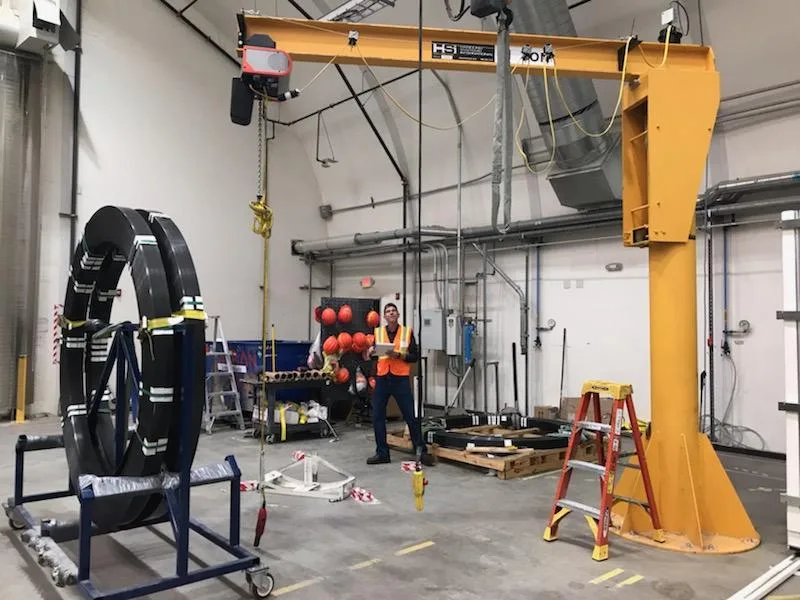Jib Cranes v Davit Cranes
When comparing jib cranes and davit cranes, it’s important to understand their unique characteristics and applications. Let’s explore the key differences between these two types of cranes to help potential buyers make informed decisions.
Jib cranes are versatile lifting solutions that are commonly used in various industrial settings. They consist of a horizontal boom attached to a vertical mast or wall, allowing for a wide range of lifting and moving operations.
Types of Jib Cranes:
- Freestanding jib cranes (medium and heavy duty)
- Wall/column mounted jib cranes (tie rod and cantilever styles)
- Portable forkpocket jib cranes
- Mast type jib cranes
- Articulating jib cranes
- Telescopic boom jib cranes
- Wall traveler jib cranes
Key Features:
- 360-degree rotation (for some models)
- Capacities up to 12 tons
- Spans up to 35 feet
- Manual or motorized rotation options
- Suitable for various applications and workspaces
Davit Cranes
Davit cranes are typically smaller and more specialized than jib cranes. They are often used in marine applications or for lifting equipment onto elevated platforms.
Key Features:
- Typically smaller and more compact than jib cranes
- Often portable or easily dismantled
- Commonly used in marine environments or for maintenance work
- Limited lifting capacity compared to most jib cranes
Comparison
| Feature | Jib Crane | Davit Crane |
|---|---|---|
| Size | Generally larger | Typically smaller and more compact |
| Capacity | Up to 12 tons | Usually lower capacity |
| Versatility | Highly versatile for various industrial applications | More specialized, often for marine or maintenance use |
| Rotation | 360-degree rotation available | Limited rotation |
| Installation | Can be freestanding, wall-mounted, or portable | Often portable or temporarily installed |
| Customization | Highly customizable with various options | Less customizable |
Choosing the Right Crane
When deciding between a jib crane and a davit crane, consider the following factors:
- Application: Jib cranes are ideal for general industrial use, while davit cranes are better suited for specialized applications, particularly in marine environments.
- Lifting Capacity: If you need to lift heavy loads, a jib crane is likely the better choice due to its higher capacity options.
- Available Space: Jib cranes offer more options for installation, including freestanding and wall-mounted versions, making them suitable for various workspace configurations.
- Portability: While some jib cranes are portable, davit cranes are generally easier to move and set up in different locations.
- Customization: Jib cranes offer more customization options, including telescopic booms and articulating designs, allowing for greater flexibility in meeting specific needs.
By understanding these differences, potential buyers can make an informed decision based on their specific requirements and workspace constraints.

